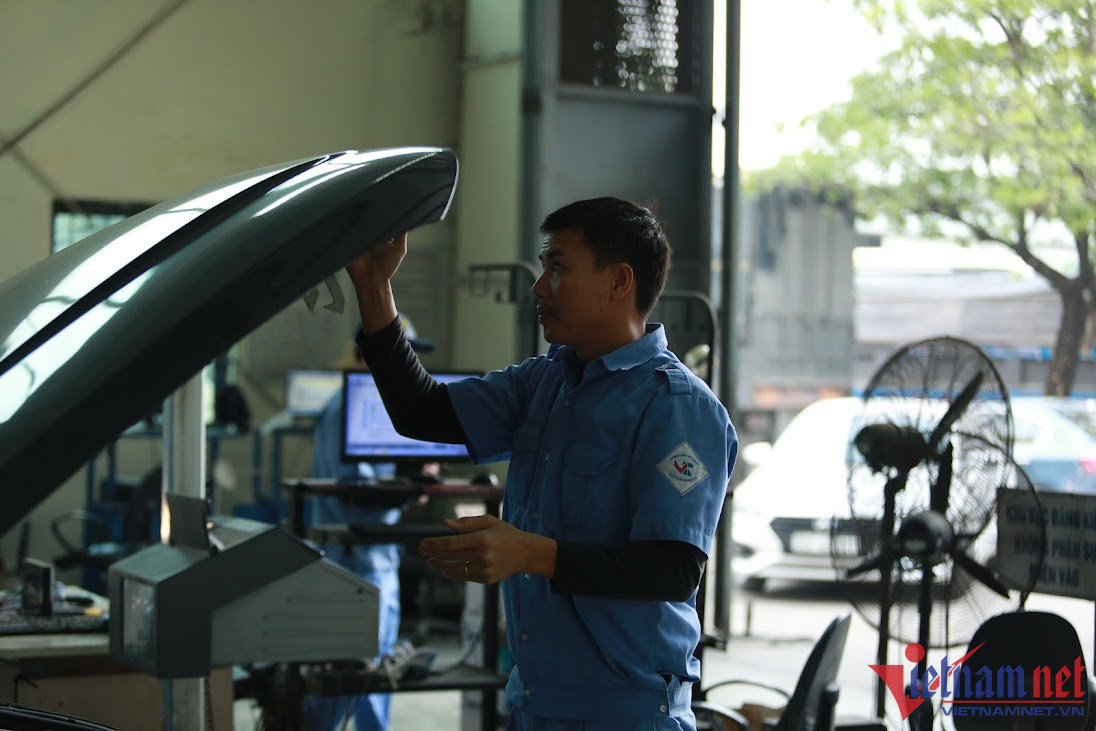Records at inspection centers show that brake systems and lights are the two faults that cause cars to fail the first inspection the most in the past 3 months.

Statistics from the Vietnam Register show that in March, registration units nationwide inspected more than 379,000 cars, of which more than 315,000 cars met technical safety and environmental protection (ATKT & BVMT) standards, nearly 64,000 cars failed to meet standards and had to be maintained, repaired, and adjusted for re-inspection.
Notably, in the first quarter, inspection units nationwide inspected nearly 1.3 million cars, of which more than 203,000 cars failed the first time and had to be maintained, repaired, and adjusted for re-inspection.
The top fault is the lighting system.
On the afternoon of April 11, at the 29.03V Vehicle Inspection Center (Dong Da, Hanoi), which mainly inspects cars, the brake system and lights are still the two most common defects that cause cars registered here to fail the first inspection.
Similarly, at the 29.08D Vehicle Inspection Center (Hoai Duc, Hanoi), the Director of the Dang Nguyen Sinh Center said that the rate of cars failing the first inspection at the unit is 11%. Of which, the leading first-time error is the lighting system and signal lights. Next is the braking system and third is the steering system and environmental emission errors.
At Inspection Center 1908D (Phu Tho), in the first 3 months of 2024, the unit had 260/1,971 vehicles that failed inspection (accounting for 13.19%), of which 65 cases failed due to electrical and lighting systems.
According to the leaders of the inspection units, under the old regulations, cars with "modified" lights (changing the front light cluster) when going for inspection only need to put the vehicle into the light index measuring machine (color, light intensity, light beam...) if it meets the requirements, it will pass the light inspection category.
However, with the new regulation in Circular 43/2023, in cases of changing the headlight cluster, the vehicle owner must present the declaration of conformity of this headlight cluster or there must be a conformity certification stamp on the headlight cluster. Otherwise, the vehicle will immediately fail the headlight inspection category, without having to measure the light index with a testing machine.
Mr. Tran Quoc Hoan, Deputy Director in charge of the 29.03V Inspection Center, recommends that vehicle owners need to carefully study the regulations before "upgrading" the lights. In case of replacing the lighting cluster, the cluster must be certified or declared to be in compliance with regulations, and this certificate must be re-applied to present when going for inspection.
For other errors, vehicle owners should check and fix defects and damages (if any) before taking the vehicle for inspection to avoid having to go back and forth many times, wasting time for themselves and creating more pressure for the inspection centers.
The country currently has 294 inspection centers and branches with 546 inspection lines. Of these, 279 centers are operating with 455 inspection lines. In the first 3 months of the year, the Department has posted warnings on 11,600 vehicles that have been administratively sanctioned and removed warnings on 827 vehicles that have resolved their administrative violations.
First inspection of the scooter will be warned about the connection
In Circular 02/2023 amending and supplementing Circular 16/2021 regulating motor vehicle inspection, during the vehicle inspection process, if the vehicle inspection centers detect technical defects, they will enter the defect content and vehicle information in the vehicle warning section of the motor vehicle inspection system software of the Department of Registration.
This warning will be communicated between inspection centers, when the vehicle owner intentionally does not fix the problem, and takes the vehicle to another inspection unit for inspection. During the process of entering vehicle data before inspecting the vehicle, the inspector will grasp the content of the vehicle being warned to pay more attention during the inspection process, avoiding missing errors and defects. This is to prevent vehicles that do not meet technical safety requirements from still circulating.